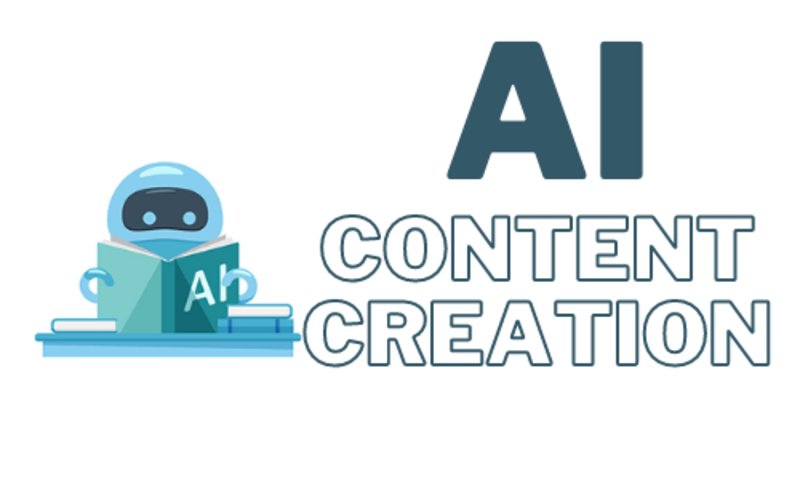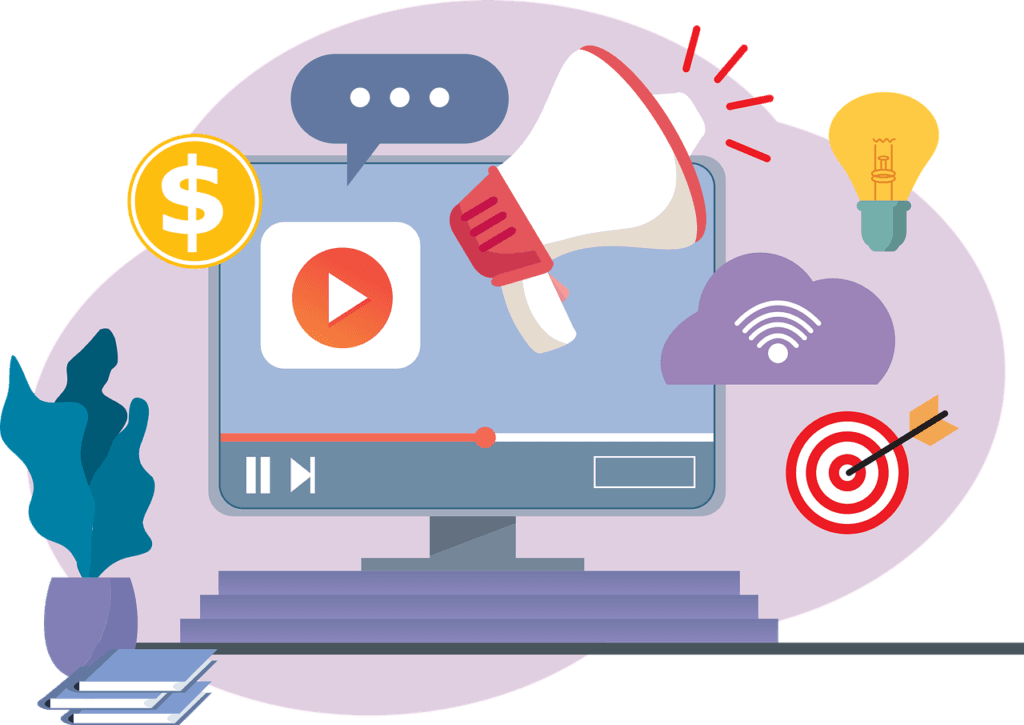- 1. How Big is the AI-Centric Software Market?
- 2. What is the Investment Outlook for Generative AI Platforms?
- 3. How are AI Startups Performing in the Market?
- 4. What is the Revenue Forecast for Generative AI?
- 5. How Many Companies are Focusing Solely on AI Software?
- 6. What is the Size of the AI Ecosystem?
- 7. How Much are Enterprises Spending on Generative AI Solutions?
- 8. How Widely is AI Adopted by Enterprise Companies?
- 9. How Prevalent is Generative AI Usage in the US?
- 10. What Percentage of US Companies Have Implemented Generative AI?
- 11. How Many People Use ChatGPT Monthly?
- 12. How Quickly Did ChatGPT Reach 100 Million Users?
- 13. What Do CEOs Think About Generative AI?
- 14. Is Generative AI a Top Investment Priority?
- 15. How Many US Companies Use Generative AI in Marketing?
- 16. How Efficient Has AI Made Marketers?
- 17. What Creative Benefits Do Marketers Get from AI?
- 18. How Does AI Help in Cost Management?
- 19. How Does AI Aid in Content Scaling?
- 20. What Percentage of High-Performing Marketers Use AI?
- 21. How Common is AI Usage in Content Creation Among Small Businesses?
- 22. How Many Top-Performing Companies Have Defined AI Strategies?
- 23. How Do Consumers Perceive AI Recommendations?
- 24. What Are the Main Reasons Some Marketers Haven't Adopted AI Yet?
- 25. How Optimistic Are Marketers About AI's Future?
- 26. How Often Do Marketers Use AI Tools?
- 27. What Are the Limitations of AI in Marketing?
- 28. How Do Marketers View the Use of Free vs. Paid AI Tools?
- 29. How Do AI Tools Help Marketers Save Time?
- 30. What Percentage of Non-AI Marketers Plan to Start Using AI?
- Conclusion
- We got all the latest Marketing Stats here:
In today’s fast-paced digital landscape, artificial intelligence (AI) is transforming the way businesses approach marketing. From automating mundane tasks to providing deep insights through data analysis, AI is reshaping the marketing landscape. This article explores key statistics and future trends in AI marketing, offering insights into how businesses can leverage AI to stay ahead of the curve.
Artificial intelligence is no longer a futuristic concept; it’s a present-day reality that’s revolutionizing various industries, including marketing. With AI, marketers can now predict consumer behavior, personalize customer experiences, and optimize campaigns with unprecedented precision. This article delves into essential statistics and trends that highlight the growing role of AI in marketing, providing actionable insights for businesses aiming to harness its potential.
1. How Big is the AI-Centric Software Market?

Market Growth
The global AI-centric software market’s annual revenue is projected to reach approximately $251 billion by 2027, up from $64 billion in 2022. This exponential growth underscores the increasing reliance on AI technologies across various sectors, including marketing.
The surge is driven by advancements in machine learning, natural language processing, and data analytics, which enable more sophisticated and effective marketing solutions.
Implications for Marketers
For marketers, this growth means greater access to advanced tools that can automate processes, analyze large datasets, and provide deeper insights into consumer behavior. Investing in AI technologies can enhance campaign effectiveness, improve ROI, and provide a competitive edge in a crowded marketplace.
2. What is the Investment Outlook for Generative AI Platforms?
Generative AI Spending
Spending on generative AI platforms and applications is estimated to reach $55.7 billion by 2027. Generative AI, which includes technologies like ChatGPT and DALL-E, is transforming content creation, customer service, and personalization in marketing.
Practical Applications
Marketers are leveraging generative AI for creating personalized content, generating product descriptions, and even developing ad copy. This technology not only saves time but also ensures that the content is highly relevant and engaging, tailored to individual consumer preferences.
3. How are AI Startups Performing in the Market?
Investment in AI Startups
VC investments in AI startups worldwide hit nearly $50 billion in 2023, reflecting the significant interest and confidence in AI technologies. These startups are at the forefront of innovation, developing new tools and applications that push the boundaries of what’s possible in marketing.
Why It Matters
For businesses, staying updated with the latest AI innovations can provide early access to cutting-edge tools and solutions. Collaborating with or investing in AI startups can also drive innovation within the company, leading to more effective marketing strategies.
4. What is the Revenue Forecast for Generative AI?
Market Revenue Projections
The market revenue of generative AI is forecasted to reach .6 billion by 2028, a nearly fivefold increase from .78 billion in 2024. This rapid growth highlights the expanding applications of generative AI in various domains, including marketing.
Impact on Marketing
Generative AI is revolutionizing marketing by enabling the creation of highly personalized and dynamic content. This technology can generate marketing materials at scale, from social media posts to email campaigns, ensuring that content remains fresh and relevant.
5. How Many Companies are Focusing Solely on AI Software?
Number of AI Companies
There are over 1,500 companies operating solely in the AI software space, indicating a robust and growing industry dedicated to advancing AI technologies. These companies are developing innovative solutions that cater to diverse needs, from predictive analytics to automated customer service.
Opportunities for Marketers
With so many companies focusing on AI software, marketers have a wide array of tools and solutions to choose from. Evaluating and selecting the right AI tools can significantly enhance marketing efficiency and effectiveness, helping businesses to achieve their goals more effectively.
6. What is the Size of the AI Ecosystem?
AI Ecosystem
The AI ecosystem consists of more than 29,900 companies in the US, UK, and EU alone. This extensive network includes developers, researchers, and businesses that are collectively advancing AI technologies.
Strategic Insights
For marketers, being part of this ecosystem means access to a wealth of knowledge, tools, and collaborative opportunities. Engaging with the AI community through conferences, partnerships, and research initiatives can drive innovation and keep marketing strategies aligned with the latest technological advancements.
7. How Much are Enterprises Spending on Generative AI Solutions?
Enterprise Spending
Enterprise spending on generative AI solutions is estimated to hit $143 billion by 2027, up from $16 billion in 2023. This significant increase reflects the growing confidence in the capabilities of generative AI to transform business operations, including marketing.
Marketing Transformation
Generative AI solutions are being used to enhance various aspects of marketing, from content creation and customer engagement to data analysis and campaign optimization. By investing in these solutions, enterprises can streamline their marketing processes, improve targeting accuracy, and deliver more personalized customer experiences.
8. How Widely is AI Adopted by Enterprise Companies?
AI Adoption Rates
42% of enterprise companies worldwide, with over 1,000 employees, actively use AI. This high adoption rate demonstrates the trust and reliance large organizations place on AI technologies to drive efficiency and innovation.
Benefits for Marketing
For marketers in these enterprises, AI offers tools for predictive analytics, automated content creation, and enhanced customer segmentation. Utilizing AI can lead to more data-driven decisions, improved campaign performance, and better customer insights.
9. How Prevalent is Generative AI Usage in the US?
Generative AI Usage
In the US, 100.1 million people use generative AI at least once a month. This widespread usage indicates that generative AI is becoming a mainstream technology, influencing various aspects of daily life and business operations.
Marketing Applications
Marketers can leverage the popularity of generative AI to create more engaging and personalized experiences for consumers. From chatbots that provide instant customer support to AI-generated content that resonates with target audiences, the applications are vast and impactful.
10. What Percentage of US Companies Have Implemented Generative AI?

Implementation in Businesses
54% of US companies with over $500 million in annual revenue have already implemented generative AI in some areas of their business. This high adoption rate reflects the growing trust in AI technologies to enhance business performance and customer engagement.
Enhancing Marketing Strategies
For these companies, generative AI is used to optimize marketing campaigns, improve customer interactions, and generate insights from large datasets. By integrating AI into their marketing strategies, businesses can achieve greater efficiency and effectiveness, driving better results.
11. How Many People Use ChatGPT Monthly?
ChatGPT User Base
ChatGPT has over 140 million monthly active users, highlighting its widespread adoption and utility. This AI tool is being used for a variety of applications, from customer support to content generation, demonstrating its versatility and effectiveness.
Marketing Implications
For marketers, the extensive user base of ChatGPT indicates a significant opportunity to integrate AI into customer service and engagement strategies. Using ChatGPT, businesses can provide instant, accurate responses to customer inquiries, generate content, and even assist in lead generation. This can enhance customer satisfaction and streamline various marketing processes.
12. How Quickly Did ChatGPT Reach 100 Million Users?
Rapid Growth
ChatGPT reached 100 million monthly active users in just two months after its launch. This rapid growth underscores the high demand for advanced AI tools and the effectiveness of ChatGPT in meeting user needs.
Leveraging Rapid Adoption
Marketers can take advantage of ChatGPT’s rapid adoption by integrating it into their customer interaction strategies. Whether it’s for handling customer inquiries, providing product recommendations, or generating marketing content, ChatGPT can significantly enhance efficiency and customer experience.
13. What Do CEOs Think About Generative AI?
CEO Perspectives
69% of CEOs believe generative AI offers broad benefits for their organization. This high level of confidence reflects the perceived value of AI in driving innovation, improving efficiency, and enhancing decision-making.
Strategic Integration
CEOs’ positive outlook on generative AI encourages marketers to explore its potential in their strategies. By demonstrating clear benefits, such as cost savings, improved customer engagement, and better data insights, marketers can secure executive buy-in for AI initiatives.
14. Is Generative AI a Top Investment Priority?
Investment Priorities
72% of US CEOs say generative AI is a top investment priority despite economic uncertainties. This commitment to AI investment highlights its strategic importance and potential for significant returns.
Focused Investments
For marketers, this means that resources are likely to be allocated towards AI initiatives. Focusing on areas where AI can deliver the most value, such as personalized marketing, predictive analytics, and content creation, can ensure that these investments yield substantial benefits.
15. How Many US Companies Use Generative AI in Marketing?
Generative AI in Marketing
50% of US companies have implemented generative AI in their marketing initiatives. This widespread adoption showcases the technology’s effectiveness in enhancing marketing strategies and driving better results.
Practical Uses
Generative AI is being used to create personalized marketing content, optimize ad targeting, and analyze consumer data. Marketers can use AI to automate repetitive tasks, generate creative content, and gain deeper insights into customer behavior, leading to more effective and efficient marketing campaigns.

Related: Check out our free tools:

16. How Efficient Has AI Made Marketers?
Efficiency Gains
86% of marketers say AI has made them more efficient or saved them time. AI tools automate routine tasks, streamline workflows, and provide data-driven insights, allowing marketers to focus on strategic activities.
Enhancing Productivity
By leveraging AI for tasks like data analysis, customer segmentation, and content generation, marketers can significantly boost their productivity. This allows for more time to be spent on creative and strategic planning, leading to better overall campaign outcomes.
17. What Creative Benefits Do Marketers Get from AI?
Boost in Creativity
42% of marketers cite extra creativity as a benefit of AI tools. AI can help generate new ideas, provide creative inspiration, and even create content, enhancing the creative capabilities of marketing teams.
Creative Applications
AI tools can analyze trends, suggest creative concepts, and automate the creation of visual and written content. This not only saves time but also ensures that marketing materials are innovative and engaging, helping brands stand out in a crowded market.
18. How Does AI Help in Cost Management?
Cost Reduction
34% of marketers say AI has helped them cut costs. By automating repetitive tasks and optimizing resource allocation, AI can significantly reduce operational expenses.
Cost-Effective Strategies
Marketers can use AI to optimize ad spend, improve targeting accuracy, and streamline campaign management. This ensures that marketing budgets are used more efficiently, leading to higher ROI and better overall performance.
19. How Does AI Aid in Content Scaling?
Scaling Content Output
29% of marketers report that AI has helped them scale their content output. AI tools can generate content quickly and efficiently, allowing marketers to produce a higher volume of quality content.
Strategies for Scaling
AI can be used to automate the creation of blog posts, social media updates, and even video content. This enables marketers to maintain a consistent content schedule, meet increasing content demands, and ensure that all content is optimized for performance.
20. What Percentage of High-Performing Marketers Use AI?

AI Adoption Among Top Marketers
Top-performing companies are twice as likely to use AI for marketing compared to their lower-performing counterparts. This indicates that AI is a key differentiator in driving marketing success.
Leveraging AI for Success
Marketers in top-performing companies use AI for various applications, including customer insights, predictive analytics, and personalized marketing. By integrating AI into their strategies, these companies can make more informed decisions, optimize campaigns, and deliver superior customer experiences.
21. How Common is AI Usage in Content Creation Among Small Businesses?
AI in Small Business Marketing
44.4% of small businesses use AI primarily for producing content. This statistic highlights the growing accessibility of AI tools, even for smaller enterprises. These businesses are leveraging AI to create blog posts, social media content, and marketing materials efficiently.
Practical Implications
Small businesses can benefit significantly from AI by automating content creation, allowing them to compete with larger firms. AI tools can help generate high-quality content quickly, freeing up resources for strategic planning and customer engagement. By adopting AI, small businesses can enhance their marketing efforts without significantly increasing costs.
22. How Many Top-Performing Companies Have Defined AI Strategies?
AI Strategies in Top Firms
70% of high-performing marketers have a fully defined AI strategy. This statistic underscores the importance of strategic planning in leveraging AI effectively. Having a clear AI strategy helps these companies integrate AI into their operations seamlessly, driving innovation and improving performance.
Strategic Integration
For marketers, defining an AI strategy involves identifying key areas where AI can add value, setting clear goals, and selecting the right tools. By doing so, businesses can ensure that AI initiatives are aligned with overall objectives, maximizing their impact and return on investment.
23. How Do Consumers Perceive AI Recommendations?
Consumer Openness to AI
64% of consumers are open to purchasing a new product recommended by generative AI. This openness indicates a growing trust in AI-generated recommendations, which can significantly influence purchasing decisions.
Enhancing Consumer Trust
Marketers can leverage this trust by using AI to provide personalized product recommendations. By analyzing consumer data and preferences, AI can suggest products that meet individual needs, enhancing the shopping experience and driving sales. Ensuring transparency about how AI recommendations are generated can further build consumer trust.
24. What Are the Main Reasons Some Marketers Haven’t Adopted AI Yet?
Barriers to AI Adoption
Half of the marketers who don’t yet use AI say it’s because they lack awareness or understanding in the area. Other reasons include ethical/privacy concerns (35%), cost concerns (25%), and organizational readiness (25%). Additionally, 20% cite quality concerns, and 10% mention regulatory/compliance issues.
Addressing Barriers
To overcome these barriers, businesses can invest in education and training to improve AI literacy among their teams. Addressing ethical and privacy concerns through clear policies and robust security measures can also mitigate risks. Demonstrating the tangible benefits of AI through pilot projects can help secure buy-in and alleviate cost concerns.
25. How Optimistic Are Marketers About AI’s Future?
Future Outlook
A whopping 98% of marketers who use AI tools believe that AI will become more advanced and powerful over time. Additionally, 88% of AI marketers plan to increase or expand their AI usage in the future, reflecting strong optimism about AI’s potential.
Planning for the Future
Marketers should stay updated on AI advancements and continuously explore new tools and applications. Building a flexible AI strategy that can adapt to technological changes will ensure that businesses remain at the forefront of innovation. Engaging with AI communities and participating in industry events can also provide valuable insights and networking opportunities.
26. How Often Do Marketers Use AI Tools?

Frequency of AI Tool Usage
More than half of marketers who use AI tools report using them all (13%) or most (43%) of the time. This frequent usage highlights the integral role AI plays in modern marketing practices.
Integrating AI into Daily Operations
Marketers can integrate AI tools into their daily operations by automating routine tasks such as data analysis, content scheduling, and customer segmentation. Using AI to support decision-making processes can enhance efficiency and allow marketers to focus on strategic activities that drive growth.
27. What Are the Limitations of AI in Marketing?
Recognized Limitations
81% of marketers feel AI tools can’t fully replace human creativity. Additionally, 62% of marketers using AI tools say they can’t achieve their desired outcomes with minimal human input, indicating that significant human involvement is still necessary.
Balancing AI and Human Creativity
To leverage AI effectively, marketers should focus on using AI to augment, not replace, human creativity. AI can handle data-driven tasks and provide insights, while humans can focus on creative aspects such as campaign ideation and storytelling. This balanced approach ensures that marketing strategies benefit from both technological efficiency and human ingenuity.
28. How Do Marketers View the Use of Free vs. Paid AI Tools?
Usage Preferences
There’s a fairly even split between the usage of free and paid AI tools, with 43% of marketers mostly using free tools and 57% using paid ones. This split reflects the diverse needs and budget constraints of different businesses.
Choosing the Right Tools
Marketers should evaluate AI tools based on their specific needs and budget. Free tools can be a good starting point for small businesses or those new to AI, while paid tools often offer more advanced features and support. Conducting a cost-benefit analysis can help determine which tools provide the best value for the investment.
29. How Do AI Tools Help Marketers Save Time?
Time-Saving Benefits
86% of marketers report that AI has made them more efficient or saved them time. AI automates repetitive tasks, provides quick data insights, and streamlines workflows, significantly reducing the time spent on manual processes.
Practical Time-Saving Applications
Using AI for tasks like data entry, customer service automation, and campaign management can free up marketers to focus on strategic planning and creative work. Implementing AI-driven analytics tools can also speed up the process of gaining insights from large datasets, enabling faster decision-making and campaign adjustments.
30. What Percentage of Non-AI Marketers Plan to Start Using AI?
Future Adoption Plans
75% of marketers who don’t currently use AI tools to create content or help with their marketing say it’s likely they’ll start in the future. This indicates a strong potential for growth in AI adoption as awareness and understanding of AI’s benefits continue to spread.
Preparing for AI Adoption
Businesses looking to adopt AI should start by identifying areas where AI can provide the most value. Pilot projects can help test AI applications and demonstrate their benefits. Investing in training and building a culture of innovation can also facilitate smoother AI integration and drive successful outcomes.
Conclusion
AI is reshaping the marketing landscape, offering numerous benefits from increased efficiency and cost savings to enhanced creativity and personalized consumer experiences. While there are still challenges and limitations, the overwhelming optimism and planned future investments in AI highlight its transformative potential. By staying informed about AI advancements and strategically integrating AI tools, marketers can stay ahead of the curve and achieve remarkable results.
We got all the latest Marketing Stats here:
Read Next:
- Advanced Google Analytics Tracking for Financial Websites
- SEO KPIs to Monitor in Financial Services
- Multilingual SEO for Global Banking Brands
- The Challenges of Multi-Country SEO in Financial Services
- Local Keyword Optimization for Financial Institutions





















Comments are closed.